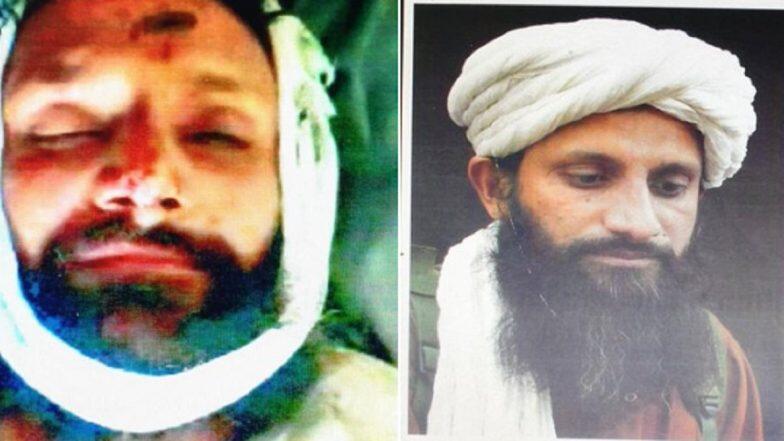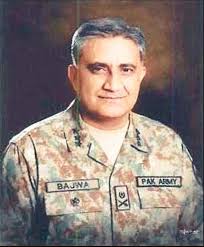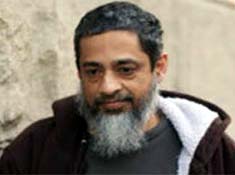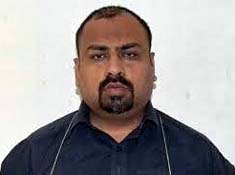Death of Indian Subcontinent Chief: A Major Blow to Al-Qaeda Network

Eight years after the fugitive ameer of Al-Qaeda, Dr Ayman Al Zawahiri had announced the creation of the Indian Subcontinent chapter of Al-Qaeda, Afghanistan’s National Directorate of Security (NDS) has confirmed the death of Commander Asim Umar, the founding ameer of Al-Qaeda in the Indian Subcontinent (AQIS), during a September 23, 2019 raid in Helmand the province of Afghanistan.
It was on the 10th anniversary of the 9/11 attacks in the United States that Dr Zawahiri had announced the creation of Al-Qaeda’s Indian Subcontinent branch [on September 11, 2011] and introduced Asim Umar as its leader in a video which was posted online. Asim Umar was a Pakistani national who had studied at Madrassah Darul Uloom Al Islamia in Binori Town, Karachi (which is also known as Jaamia Binoria) and Madrassah Haqqania in Akora Khattak, Peshawar (which is also known as Darul Uloom Haqqania). Both the Madrassahs are quite well-known Sunni Deobandi religious seminaries of Pakistan that many top commanders of the Taliban and other Pakistani jehadi groups have graduated from. While Madrassah Haqqania in Akora Khattak was being run by Maulana Samiul Haq, the pro-Taliban Deobandi ameer of his own faction of Jamiat Ulema-e-Islam till his mysterious murder in Rawalpindi on November 2, 2018, Madrassah Jaamia Binoria is headed by Mufti Naeem, being the Chancellor.
While announcing the death of Umar [on October 8, 2019], the National Directorate of Security released his side-by-side photographs, both dead and alive, which seemed identical. Al-Qaeda has not yet confirmed the death of Umar, nor has it released a martyrdom statement. The Taliban has called the NDS claim “a part of enemy fabricated propaganda,” and said only civilians were killed in the Musa Qila raid. The Taliban had issued a similar statement when the American and Afghan forces had raided two Al-Qaeda training camps in Shorabak area in Kandahar in 2015. However, the Taliban have a vested interest in hiding its ties with Al-Qaeda. Other key AQIS leaders, including Umar’s courier to Dr Zawahiri as well as Taliban members and civilians were also killed during the raid. Umar’s wife is stated to be among those captured alive. As per the NDS’ official Twitter account, “We can now confirm the death of Umar, the leader of Al-Qaeda in Indian Subcontinent during a raid in Taliban’s stronghold of Musa Qila in the Helmand province, Afghanistan.”
The former spokesman of AQIS, Usama Mahmood, is most likely to succeed Asim Umar as the ameer of the chapter. Usama has been identified as the “commander” of AQIS. Asim Umar was clearly in the top echelon of AQIS as he reportedly retained a courier to communicate directly with the fugitive Al-Qaeda ameer Dr Ayman al Zawahiri. Umar was not initially reported killed in the September 23, 2019 Musa Qila raid, though he was identified as the target of the raid. The NDS initially reported that 17 terrorists were killed, including Rehan, Umar’s courier to Zawahiri; Faizani, the AQIS chief for Helmand and an explosives expert, Madani, Faizani’s deputy, and Haji Mahmood, the Afghan Taliban’s military commander for neighboring Nauzad district. The six AQIS operatives who were killed in the raid, reportedly belonged to the Waziristan, Chaman, and Peshawar areas of Pakistan.
Asim Umar’s wife was identified as one of the six Pakistani women detained during the Musa Qila operation. Fourteen militants were also captured alive. Afghan Special Forces killed six Al-Qaeda terrorists who were surrounded within a Taliban unit in their hideout in Musa Qila, Helmand. Known as fidayeen, the AQIS terrorists came from Waziristan, Chaman, and Peshawar. The raid against AQIS in Musa Qila only came to the attention of the media after it was reported that scores of civilians have also been killed during the operations. Although accounts are confused, it appears that a majority of the civilians who were killed were traveling in a wedding party in the Helmand district. The presence of the commanding ameer of an Al-Qaeda group in a Taliban-controlled district in Afghanistan’s violent south underscored the ties between the Taliban and associates of the militants who carried out the 9/11 terrorist attacks 18 years ago. The AQIS could not operate in a Taliban stronghold such as Musa Qila without the explicit permission of the Taliban.
Certainly, the NDS described Umar’s AQIS command cell as “embedded within a Taliban unit”. The development also cast a doubt on the Afghan Taliban’s pledge during recent peace negotiations with the United States to prevent Afghanistan from reverting to a safe haven for violent extremists. In its statement denying that an Al-Qaeda leader had been killed in the raid, the Afghan Taliban said that the truth of the matter remains that the Musa Qila district only caused heavy civilian losses. As far as Umar is concerned, Pakistani security officials believe that his death is a major blow to Al-Qaeda in the Indian Subcontinent. He not only recruited a significant number of trained militants, but also compelled a number of local militants to pledge allegiance to his affiliate. The security officials informed, that due to his previous affiliation with various local militant outfits operating in the region, Umar managed to influence networks of both the Afghan and Pakistani Taliban, jehadi groups operating in Jammu & Kashmir and smaller groups operating in other South Asian countries.
The Afghan security officials have reportedly stated that Umar had managed to build a network of about 1,500 militants across the region, with recruits drawn from South Asia, Iran and Central Asia. Umar had close ties to the Taliban’s leadership council in Quetta, and his militants provided training to the Taliban in Afghanistan and were involved in fighting in the Afghan provinces of Helmand and Nimroz. Details from the scene were murky after the Musa Qila raid, as accounts from Taliban-controlled areas are sometimes contradictory. Military officials in Washington have said that some civilians had most likely been killed. Government officials in Helmand Province said up to 40 civilians might have died, including members of a wedding party. A statement from the US-led mission said the raid was under investigation. “Because of heavy fighting, we did conduct targeted precision strikes against barricaded terrorists firing on Afghan and US forces,” the statement added. “We assess the majority of those killed in the fighting died from Al-Qaeda weapons or in the explosion of the terrorists’ explosives caches or suicide vests.”
The Afghan Taliban have been fighting a bloody insurgency against the US-backed Afghan government since Mullah Umar-led Taliban government was toppled in 2001. Those were the days when Asim Umar had traveled to Afghanistan where he had reportedly met Osama bin Laden and Dr Ayman Zawahiri and later joined the Azad Kashmir chapter of Al-Qaeda-linked Commander Ilyas Kashmiri’s Harkatul Jehadul Islami (HUJI), a Pakistan based militant group with branches across the Indian Subcontinent. Prior to his leadership position, Asim Umar had for years played a prominent role as a propagandist in video releases from Al-Qaeda and the Tehrik-e-Taliban Pakistan (TTP), and was an author of four books promoting the cause of jehad. One such book is titled, “The Army of Anti-Christ: Blackwater, Documentation of the Dreadful Terrorist Activities of America’s Blackwater in Islamic Countries.”
By April 2014, several months before being named the leader of AQIS, Al-Qaeda was identifying Asim Umar as the head of its Shariah committee in Pakistan. According to The Long War Journal, Asim Umar had been featured in Al-Qaeda’s propaganda on a number of occasions during the last few years. He was important enough within the organization to have been featured in a propaganda film created by Al-Qaeda to mark the 11th anniversary of the September 11, 2001 terrorist attacks. On July 23, 2013, Al-Qaeda’s propaganda arm, As Sahab, had released a video which featured TTP commander Maulana Asim Umar, calling upon the Indian Muslims to participate in the global jehad to give a final push to the collapsing edifice of America. In the video, titled “Why is There No Storm in Your Ocean?”, Asim Umar told the Muslims of India that the jehad does not limit itself to any specific region. Instead, he said, lives are being sacrificed in this jehad to defeat the United States and its allies everywhere.
In a 55-minute video posted online at the launching of AQIS, Zawahiri had described the formation of Al-Qaeda in the Indian Subcontinent as a glad tiding for Muslims in Burma, Bangladesh, Assam, Gujarat, Ahmedabad, and Kashmir. Zawahiri added that the new wing would rescue Muslims there from injustice and oppression. In a subsequent video message, Asim Umar called for “global jehad to give a final push to the collapsing edifice of the US,” adding that “lives are being sacrificed in this jehad to defeat America and its allies everywhere.” Al-Qaeda leader had also featured in previous videos seeking to further the group’s campaigns in India. “To wave Islam’s flag over Srinagar’s Lal Chowk, caravans are heading from Afghanistan to liberate India and it is not being done on instructions of any intelligence agency, and not as part of some governmental policy, but simply to abide God’s command.” He criticized the Pakistani state, its intelligence agencies, and its people for ‘failing to help the Jehad in Kashmir’.
Subsequently, the first major terrorist operation carried out by the AQIS was directed against the Pakistani state when the Karachi Naval Dockyard was attacked on September 6, 2014. The mystery behind the attack was solved when the then AQIS spokesman Usama Mahmood issued a press statement, claiming responsibility for the attack. He said that some naval officers had executed the operation to take control of a Pakistani Naval ship PNS Zulfiqar and to launch missile attacks on US warships in the Indian Ocean, carrying eight C-802 surface to surface anti-ship missiles. He said all the participants in the “fearless operation” were officers of the Pakistan Navy. He described it as an act of rebellion against the Pakistani Navy by its own elements, striking at its policy of humiliation and subjugation to the US. He had issued another statement on September 29, 2014, making public the name and picture of a Pakistan Navy officer, Second Lieutenant Zeeshan Rafeeq. He said the attack was to take control of two Pakistan Navy warships – PNS Zulfiqar and PNS Aslat – and use them for destroying an American oil tanker and an Indian warship.
During the attempt to seize PNS Zulfiqar, the rogue officers were in uniform and had their service cards displayed. They simply walked on board. The frigate was due to sail the same day to join an international naval flotilla in the Indian Ocean. However, the plan was foiled primarily by the alertness of PNS Zulfiqar’s gunner. The militants, who were supposed to board the PNS Zulfiqar, approached the docked ship in an inflatable boat, wearing Marine uniforms. The gunner felt they were too close and their weapons appeared to be AK-47s which are not standard Marine issue. The gunner thus turned his sights on them and fired a warning shot. The militants, fearing the game was up, retaliated with rockets and automatic weapons. At the sound of firing, Marines and naval commandos rushed to the ship and were engaged by the renegade officers awaiting the militants on the inflatable boat. While those on board the ship continued to fight it out for a few hours, the ones in the inflatable boat had no chance. The gunner ripped apart the boat with his Gatling anti-aircraft gun, killing all six on board. The four rogue naval men were killed aboard the frigate. The battle ended when the last surviving rogue naval officer, a young sub-lieutenant, blew himself up after being surrounded.
Surprisingly, the AQIS claim was established after several participants in the terrorist operation turned out to be the serving officers of the Pakistan Navy. The raid also pointed to the growing penetration of Pakistani armed forces by radical elements including Al-Qaeda. The subsequent death sentence awarded to five Naval officers proved that the fidayeen assault on the naval dockyard could not have been possible without inside help. Those court-martialed and sentenced to death by the Navy tribunal after in-camera trials were Sub-Lieutenant Hammad Ahmed (whose father Saeed Ahmed is a retired Army Major), Irfan Ullah, Hashim Naseer, Mohammad Hammad and Arslan Nazeer. The naval authorities had concluded the court martial proceedings on April 12, 2016 and promulgated the judgment on April 14, 2016. All those officers arrested were tried on charges of inciting mutiny and hatching a conspiracy.
In January 2015, three months after the botched Naval Dockyard operation, Asim Umar had announced the launching of the women wing of AQIS, led by Afinda Binte Ayesha who he said would seek guidance from Umaima Hassan Ahmed Muhammad Hassan, one of the wives of Zawahiri. Named as “Al-Qaeda Shaheen Force”, the women wing of the terror outfit was to operate from the Pak-Afghan tribal belt and was tasked to organize a squad of female suicide bombers. Therefore, Asim Umar had become one of the most wanted militant commanders not only by Pakistani authorities by also by the Americans. His reported killing must have come as a big sigh of relief for the Pakistani military authorities.




